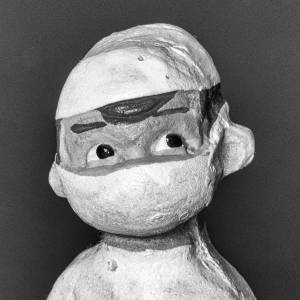Silly Saturday
In some ways this is a rather silly blip, so I'll tag it for admirer's fun Silly Saturday challenge. "Why blip a piece of discoloured aluminium foil?" you may well ask!
Well, because my Editor kindly suggested it! It's actually the result of her using the bicarbonate-of-soda/aluminium-foil technique of cleaning silver. The foil was used to line the inside of a large casserole into which she placed some tarnished silver-plated cutlery along with a hot solution of sodium bicarbonate, deep enough to cover the cutlery. (Some "recipes" say to add ordinary salt [sodium chloride] too.)
The pundits say that it works well and is less damaging to the silver than using polish, although rinsing and a gentle rub with a cloth is usually necessary.
How does it work, and why does the aluminium end up stained? Well, tarnish on silver occurs when the metallic silver reacts with sulphur in the air, to produce a coating of silver sulphide. Polishing it removes that layer but inevitably removes a small amount of silver as well. Aluminium is more reactive than silver (therefore it "likes" to react with sulphur more than silver does) so it "tempts" the sulphur to move from the surface of the silver to the surface of the aluminium. The silver sulphide is converted back to metallic silver.
For the technique to work the silver has to be in contact with the aluminium as a tiny electrical current has to flow between them; I've not seen this written but I assume that the sodium bicarbonate acts as a conductor to complete the circuit. This is a bit like what happens to the chemicals in a battery. (More details here if you're interested.)
I'm not quite sure why the "tarnish" on the aluminium is concentrated in a ring, presumably that occurred at the surface of the bicarbonate solution.
I've enhanced the colour saturation a little but this is pretty close to how it actually looks.

Comments
Sign in or get an account to comment.


